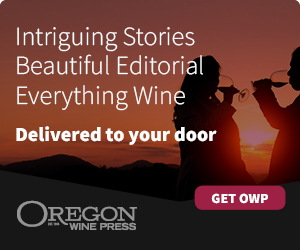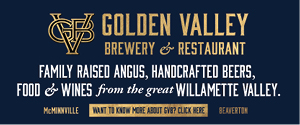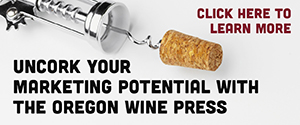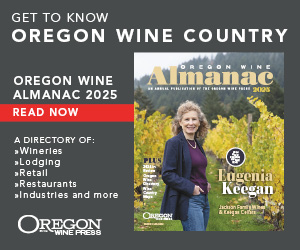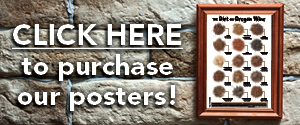The Cost of Doing Business
Consider the expenses behind winery tasting fees
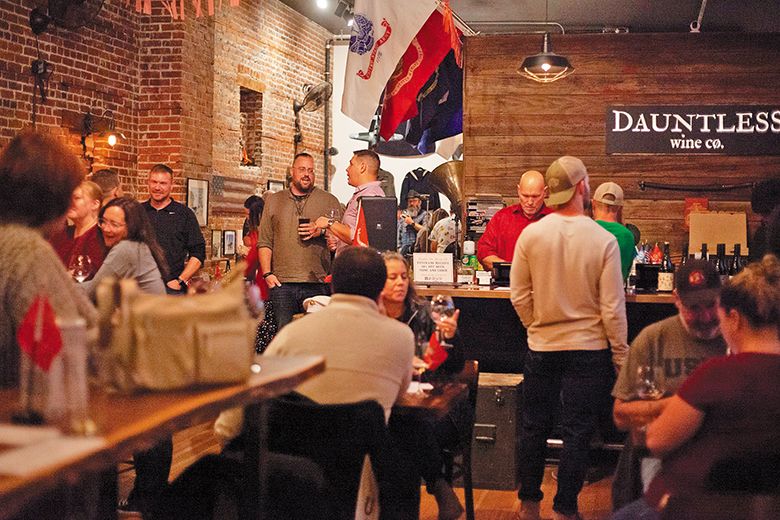
By Sarah Murdoch
Changes are afoot for West Coast wine tasting room experiences. A recent KRCB public radio story profiled Frog’s Leap Winery of Rutherford, Calif., reporting that 20 percent of its visitors are non-wine tasters, and that all guests– even those abstaining from alcohol– pay a fee.
Tasting room host Lucinda Wolf stated,“They’re here more for the experience, they come because it’s beautiful and they get to see grapes on the vine.” Not a punitive move, but rather an effort to provide each guest with a memorable visit, the winery offers non-drinkers a handcrafted nonalcoholic beverage, coupled with heaps of hospitality.
Whether charging $200, $25 or $0 to taste wine, one thing’s for certain: winery hospitality includes many unnoticed elements. Wine tasting centers around discovering new styles, grape varieties or winemaking techniques. It’s education… and luxurious pampering, too.
Oregon Wine Board’s Economic Impact Report, released February 2024 determined 3.7 million people visited our wineries in 2022. Although there are nearly 1,100 wineries in the state, not every winery has a tasting room. Oregon has roughly 500 tasting rooms, the majority located in the Willamette Valley, with a daily average of 20 visitors.
Here are some behind-the-scenes costs wine lovers may not realize:
Wine: A standard 750ml bottle holds about 25 ounces of wine, enough for roughly a dozen two-ounce tasting pours. Over the course of a day, if 20 visitors each sample a five-wine flight, they’ll go through the equivalent of about half a bottle per person– or roughly 10 bottles total. At an average retail price of $30 to $50 per bottle, that translates to $300 to $500 worth of wine consumed by tasters each day.
Labor: According to ZipRecruiter, tasting room associates in Oregon earn about $17 an hour. For a seven-hour shift, that’s $119 in wages per person. Spread across 20 daily visitors, labor costs for exceptional hospitality are nearly $6 per guest.
Power: What does electricity cost to maintain lighting, chilled wines, air conditioning or heating, power credit card devices, wireless routers and more?
According to the U.S. Energy Information Administration, the average bar/lounge uses 26.3 kWh of electricity per square foot. If Pacific Power serves a 1,000 sq. ft. tasting room, this equates to $246 per month, or $8 per day– less than $1 per visitor when divided by 20.
Water: Glassware washing, drinking water and restrooms add up, especially with Oregon’s high water rates. A busy tasting room can see water bills approaching $1,900 per month– or roughly $3 per guest. (This doesn’t include vineyard or winemaking water use.)
Real estate: Consider the mortgage: on a $500,000 tasting room space, a 15-year loan at 7 percent equates to about $3,800 per month– roughly $6 per guest per day.
Total cost: Add it all together using $40 as an average bottle price; a winery spends around $700 per day, or $36 per guest, to serve a wine flight. This simple calculation doesn’t include other related expenses such as permits, taxes or the cost to produce each bottle of wine.
What do wine producers say?
Dauntless Wine Cø. was founded by Marine veteran and winemaker Ben Martin with two fellow servicemen, Paul Warmbier and Ryan Mills. The winery, with tasting rooms in Gaston and downtown Forest Grove, offers Pinot Noir, Merlot and Syrah, along with Schönburger, a particularly rare variety. Dauntless currently charges $20 for tasting flights.
“Customers tell me they appreciate our ‘realistic’ flight pricing,” notes Martin, now the principal owner. “Our wine flight of two whites, a rosé and two reds is the equivalent of a glass and a half of wine and priced as such.”
Martin explains, “I consider our flights a loss leader, primarily because most of them are waived by a two-bottle purchase or the guest is a club member.” (Members receive complimentary flights.) He adds, “The goal with inexpensive and comped flights is providing value for our club, increasing foot traffic through the tasting room, and giving our associates a ‘foot in the door’ to establish a rapport and share the many benefits of joining our wine club.”
Recalls Martin, “When we started pouring in late 2015, most wineries charged $15, so we just followed suit without putting any thought into it. We only recently bumped it up to $20– mostly to adjust for inflation.”
Domaine Divio, an upscale Ribbon Ridge winery, has stellar views of the Dundee Hills and a firm commitment to sustainability. Like Frog’s Leap, Domaine Divio grows grapes without irrigation. Founded by the effervescent fourth-generation Burgundian producer Bruno Corneaux, the winery’s hospitality program is top-notch.
Hospitality and sales manager Calais Lively feels tasting fees are an interesting topic. “We charge $35 for a classic tasting flight of five wines, plus a bonus pour of something fun. The average bottle price of wines featured on our tasting flight is about $55. We waive the fee with a purchase of two or more bottles per person or by joining the wine club.”
Calais adopts a holistic view of Domaine Divio’s fees. “Though the cost of a tasting can range between $40 and $50, we are in the business of hospitality and providing wonderful experiences for our guests,” she shares. “At the end of the day, we want to cover our costs, but also realize that an approachable tasting fee encourages guests from all walks of life. We don’t want to price people out before they have a chance to decide if they would like to try and support our brand.”
In the historic town of Aurora, Carl McKnight, owner and proprietor of Pheasant Run Winery, has a different approach, charging $15 for a five-wine flight and comping two tastings with a three-bottle purchase. Because he owns the building and his vineyards are paid off, McKnight believes “we’re probably able to overcome a downturn in Oregon wine visitors for a short time.”
McKnight says he charges $15 “to get more return from guests who really are just in it for the sport of tasting– and not looking to purchase. Our business philosophy revolves around returning customers and visitors willing to buy a couple extra bottles, rather than someone seeking one or two trophy wines…”
He adds, “Tasting fees are always an interesting topic. Winery owners and winemakers always think the fee is way too low…because we craft superb wine and want to send our kids to college. Guests always think the fees are high– because it’s their money.”
Support your local winery
No matter what, stay tuned as the industry determines future tasting fees and how to accommodate non-tasting guests. Consider buying bottles with each tasting room visit, or at the very least a flight. As demonstrated, these purchases help keep your favorite winery’s lights on. Those dollars are well spent to keep our wine community’s tasting room culture alive and thriving.
Sarah (aka Sally) Murdoch runs Puncheon PR and has marketed many iconic sports and beverage brands, which eventually led her to the Oregon Wine Board where she headed communications for almost seven years. A native Portlander and Oregon Duck with a journalism degree, she is an avid tennis player and captains a number of tennis teams. She recently made Forest Grove her home, and her go-to winery is Tualatin Estate Vineyard. Visit www.sallymurdoch.com to learn more.


